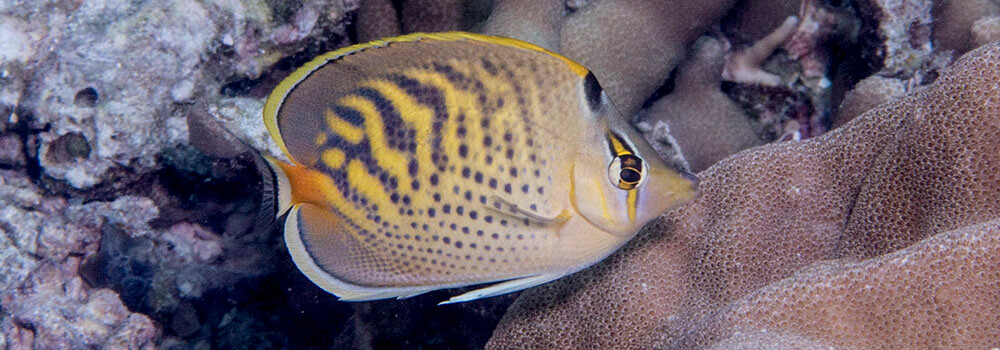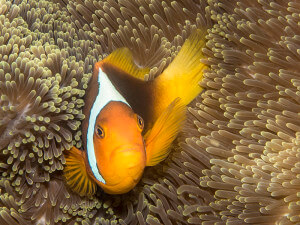
Snorkeling with hybrids in the Solomon Islands
We saw several examples of hybrids in our recent trip to the Solomon Islands (see our previous blogs, Lee’s is here and Ethan’s, here). Hybridization is generally the result of two species creating offspring that are genetically distinct from the parent species. This phenomenon is probably fairly common amongst corals, given that during spawning season there are several times when gametes from one species have the chance to interact with gametes from a genetically different, but similar species. This is much less observed in fishes, but of the few species that do hybridize, the results are very obvious.The common families of fish that tend to produce the lion’s share of the recognized hybrids are the angelfishes and the butterflyfishes. It has been suggested that their social structure, primarily that of pair-bonding, probably favors this opportunity. For example, butterflyfishes are often similarly colored and tend to occupy closely paralleled niches. In the absence of another similar species (mate), two individuals may opt for each other as the best chance for reproduction. This may be the case between the spot-banded butterflyfish (Chaetodon punctatofasciatus) and the dot-dash butterflyfish (C. pelewensis). Both are similarly patterned (the main difference is only in the orientation of the bars; spot-banded have vertical bars and dot-dash have diagonal ones). In the header photo above, the pattern of this butterflyfish from the Solomon Islands does not match either parent, rather it appears to be a mix.
This may be true for another locally common hybrid as well. The white bonnet anemonefish (Amphiprion leucokranos) is thought to be a result of a pairing between the orangefin anemonefish (A. chrysopterus) and the orange anemonefish (A. sandaracinos). Once again the nature of the strong pair-bonding between male and female comes into play and is further reinforced by the need for each individual to reside with an anemone. The initial relationship was probably a bit rocky as each species sought to ‘control’ the social structure of the anemone. In the absence of another mate, however, the two species opted for reproduction with each other, the result being the white bonnet anemonefish.

